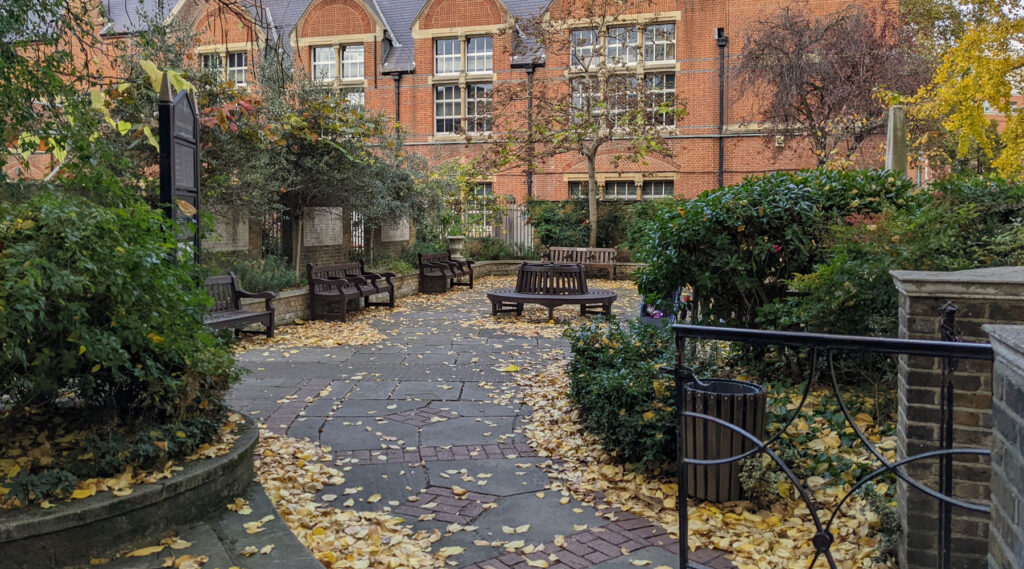This pocket park is 70 years old this year, and was created on the site of a former church that stood next to Marylebone High Street.
There have been two churches on this spot. The first built in around 1400 and was later immortalised by William Hogarth in his Rake’s Progress, as this is the church where the spendthrift Tom Rakwell marries a much richer older woman to regain his fortune.
That church was demolished and replaced in 1742 with a larger building, and numbered the likes of Lord Nelson and Lord Byron as parishioners. However, the area was growing, and in the end the church was downgraded to a chapel when the current and much larger parish church on nearby Marylebone Road was opened in 1817.
The chapel closed in 1926 as a place of worship, and was damaged during WW2 from a nearby bomb impact. In the end it was not repaired and demolished in 1949. The site was converted into an open garden in 1951 – 70 years ago.
The garden is largely as it was when first laid out, although in 2012/14 it was given a subtle refresh, and the stone monument to Charles Wesley was moved from the far corner to sit next to the road, allowing for more seating to be placed around the edges. A round memorial to Wesley was added to the pavement at the time.
Dotted around the edges are burial stones from the former graveyard, and if you visit the main parish church just up the road, they have some of the grander monuments salvaged from the demolished chapel.
The garden is very much a paved space with a raised area to one side, lots of raised bedding around the edges, and quite a few benches to sit on.
Appropriately for the site of a former church, one of the trees in the garden is the Judas Tree, so-called as legend has it that Judas hung himself from a tree, although a counter-theory is that its fruits look like “bags of silver”. If only they grew silver.
Just outside the pocket park is a huge tree, the Wych Elm, and one of a handful of mature elms in Westminster to survive Dutch Elm disease in the 1960s. The tree nearly didn’t survive another attempt on its life though, as when the garden was being created, the local council wanted to widen the road a bit here, and would have taken a slice off the garden, and got rid of the tree.
Fortunately, it survived both road widening and widespread disease.










A lovely park and a great place to have lunch after grabbing food from one of the many shops on Marylebone High Street.
Hi there! Just to say that the reference to a Judas Tree on the information board at this lovely little spot is wrong. There isn’t one. The amazing blue/violet flowers in bloom in May are on a Paulownia tomentosa, a much more interesting tree imho and well worth Googling. We’ve germinated loads of seeds from it and are currently wondering where to plant the resulting saplings. All best and thanks for interesting blog